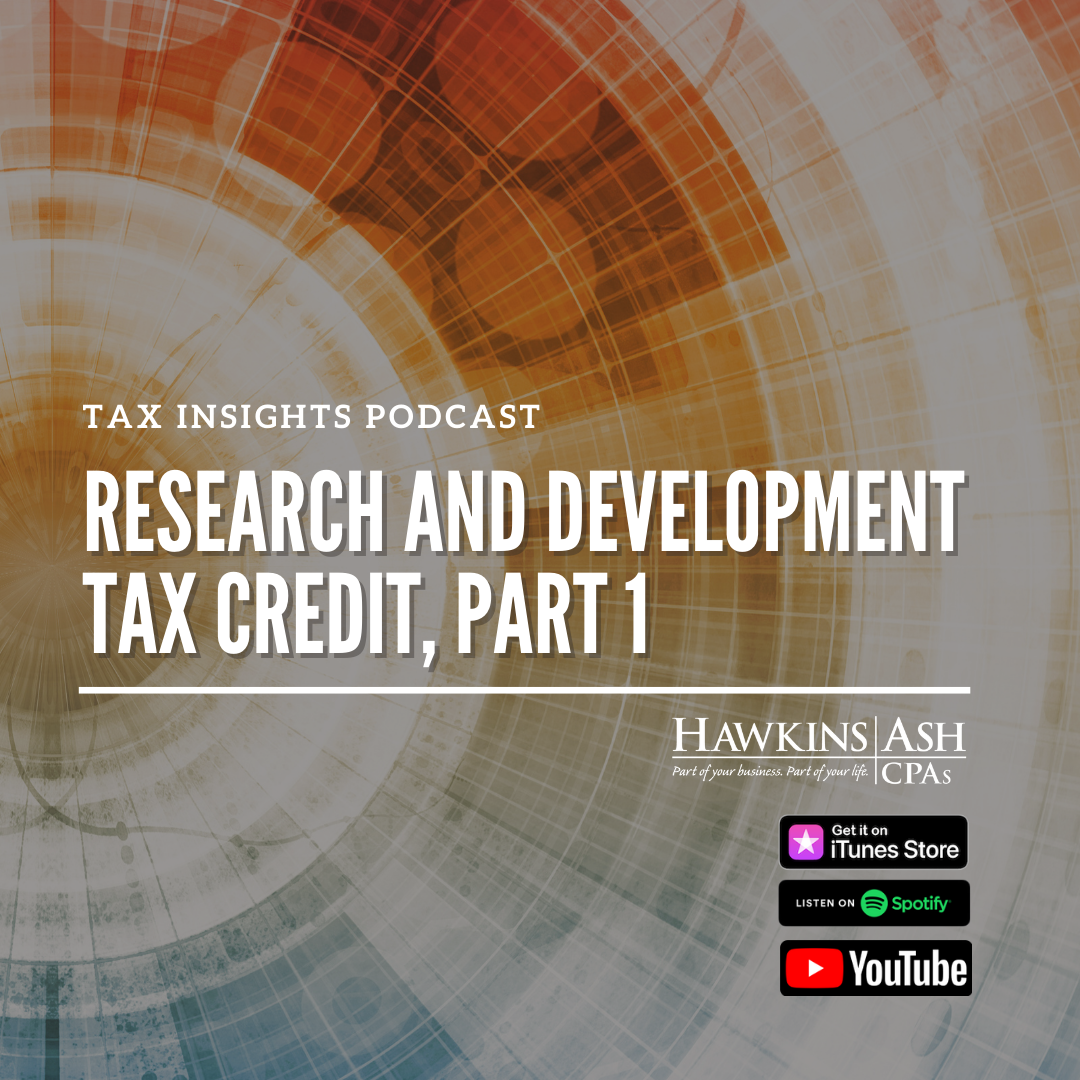Today we’re kicking off a three-part series about the research and development tax credit with Charles Wendlandt from Hawkins Ash CPAs.
When people think of research and development, the first thing that comes to mind might be a person in a white coat in a laboratory. However, what if I told you that the IRS thinks of research in a different way, and that through research and development there is the potential to significantly reduce your company’s tax liability and maximize your bottom line.
Does Your Company Qualify For the R&D Tax Credit?
Take the R&D Survey
Can You Give Us Some Examples of Industries That Might Have R&D Activity?
- Absolutely. To start manufacturing is a slam-dunk. For manufacturers, it is not a question of if, but how much.
- Other industries that are likely to qualify include architecture, engineering, construction, software, agriculture, food & beverage, tool & die, and life sciences.
- Just to give examples of business I’ve personally worked with in Wisconsin include a window manufacturer, a distillery, a badge credential software company, a farm equipment manufacturer, and a packaging company.
- Just from that list, you can see that the R&D credit is not just for businesses that have people working in lab coats.
What Are the Benefits of the R&D Tax Credit?
- The R&D Tax Credit is one of the most substantial incentives under U.S. tax law.
- For example, if a business has $100,000 worth of qualified R&D expenses, we would expect them to receive a credit between $6,500 and $8,500.
- The expenses that are used to calculate the credit can be deducted like normal.
- Those same expenses are then used to calculate the credit.
- Rare occurrence where you are able to “double dip” on deductions
- In addition, unlike a standard deduction, it is a dollar-for-dollar credit against your tax liability.
When and Why Did the R&D Tax Credit Originate?
- Credit was adopted in 1981.
- Was created in response to a perceived economic slowdown and job outsourcing becoming more commonplace.
- The credit was developed to reward American businesses for keeping technical jobs within the country as well as driving innovation within their industry.
- Initially activities qualifying for the credit were limited to creating or producing a product or process that was new to the world according to what was referred to as the “Discovery Rule”.
What Has Changed With the Credit Since 1981?
- Little changed with the credit until 2003.
- Regulations were passed to eliminate the “Discovery Rule”.
- Instead of being “new to the world”, activities now only had to be “new to the taxpayer”
- This lowered the threshold to qualify for the credit. Opening it to new industries
Okay, but What Has Happened Since 2003?
- Not a whole lot changed with the credit until 2015 with the passing of the PATH Act.
- Prior to the PATH Act, the R&D tax credit was only a temporary part of the tax code and needed to be extended every couple of years.
- The PATH Act made R&D tax credit a permanent fixture of the tax code.
- Also, the PATH Act turned off any Alternative Minimum Tax for businesses with $50 million or less in gross receipts allowing for more companies than ever before to take advantage of incentives.
- Therefore, the credit is here to stay, and ready for businesses of all types to take advantage of.
Next week we will talk about what requirements an activity needs to have to be considered qualified research. Be sure to talk to a tax professional if you have any questions about the Research and Development Tax Credit or would like further assistance.





